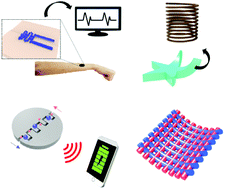Materials engineering, processing, and device application of hydrogel nanocomposites
Abstract
Hydrogels are widely implemented as key materials in various biomedical applications owing to their soft, flexible, hydrophilic, and quasi-solid nature. Recently, however, new material properties over those of bare hydrogels have been sought for novel applications. Accordingly, hydrogel nanocomposites, i.e., hydrogels converged with nanomaterials, have been proposed for the functional transformation of conventional hydrogels. The incorporation of suitable nanomaterials into the hydrogel matrix allows the hydrogel nanocomposite to exhibit multi-functionality in addition to the biocompatible feature of the original hydrogel. Therefore, various hydrogel composites with nanomaterials, including nanoparticles, nanowires, and nanosheets, have been developed for diverse purposes, such as catalysis, environmental purification, bio-imaging, sensing, and controlled drug delivery. Furthermore, novel technologies for the patterning of such hydrogel nanocomposites into desired shapes have been developed. The combination of such material engineering and processing technologies has enabled the hydrogel nanocomposite to become a key soft component of electronic, electrochemical, and biomedical devices. We herein review the recent research trend in the field of hydrogel nanocomposites, particularly focusing on materials engineering, processing, and device applications. Furthermore, the conclusions are presented with the scope of future research outlook, which also includes the current technical limitations.

- This article is part of the themed collections: Nanoscale 2021 Lunar New Year Collection and Recent Review Articles


 Please wait while we load your content...
Please wait while we load your content...